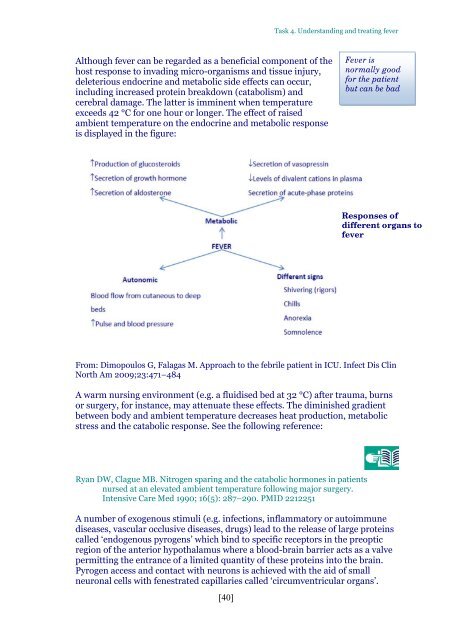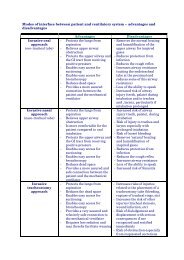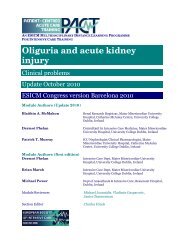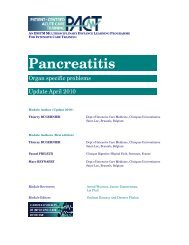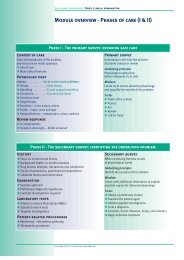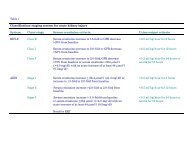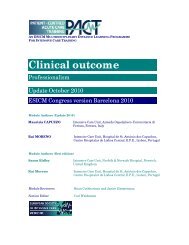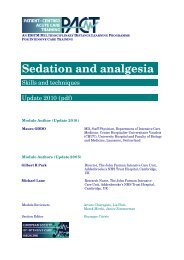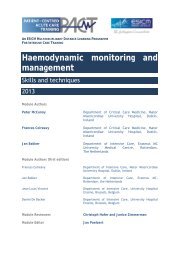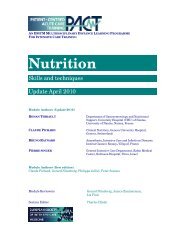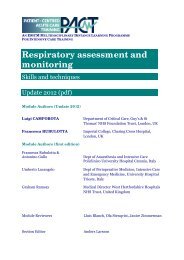Pyrexia - PACT - ESICM
Pyrexia - PACT - ESICM
Pyrexia - PACT - ESICM
Create successful ePaper yourself
Turn your PDF publications into a flip-book with our unique Google optimized e-Paper software.
Task 4. Understanding and treating fever<br />
Although fever can be regarded as a beneficial component of the<br />
host response to invading micro-organisms and tissue injury,<br />
deleterious endocrine and metabolic side effects can occur,<br />
including increased protein breakdown (catabolism) and<br />
cerebral damage. The latter is imminent when temperature<br />
exceeds 42 °C for one hour or longer. The effect of raised<br />
ambient temperature on the endocrine and metabolic response<br />
is displayed in the figure:<br />
Fever is<br />
normally good<br />
for the patient<br />
but can be bad<br />
Responses of<br />
different organs to<br />
fever<br />
From: Dimopoulos G, Falagas M. Approach to the febrile patient in ICU. Infect Dis Clin<br />
North Am 2009;23:471–484<br />
A warm nursing environment (e.g. a fluidised bed at 32 °C) after trauma, burns<br />
or surgery, for instance, may attenuate these effects. The diminished gradient<br />
between body and ambient temperature decreases heat production, metabolic<br />
stress and the catabolic response. See the following reference:<br />
Ryan DW, Clague MB. Nitrogen sparing and the catabolic hormones in patients<br />
nursed at an elevated ambient temperature following major surgery.<br />
Intensive Care Med 1990; 16(5): 287–290. PMID 2212251<br />
A number of exogenous stimuli (e.g. infections, inflammatory or autoimmune<br />
diseases, vascular occlusive diseases, drugs) lead to the release of large proteins<br />
called ‘endogenous pyrogens’ which bind to specific receptors in the preoptic<br />
region of the anterior hypothalamus where a blood-brain barrier acts as a valve<br />
permitting the entrance of a limited quantity of these proteins into the brain.<br />
Pyrogen access and contact with neurons is achieved with the aid of small<br />
neuronal cells with fenestrated capillaries called ‘circumventricular organs’.<br />
[40]


